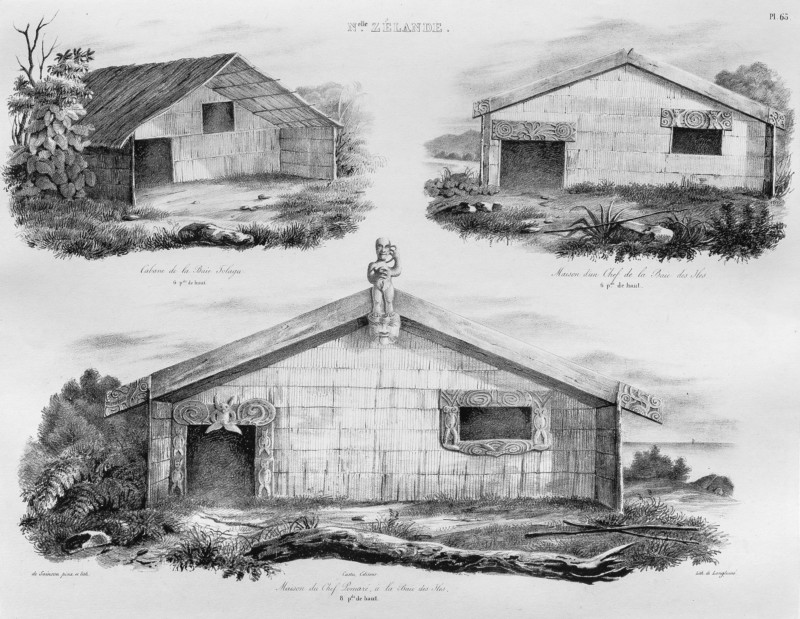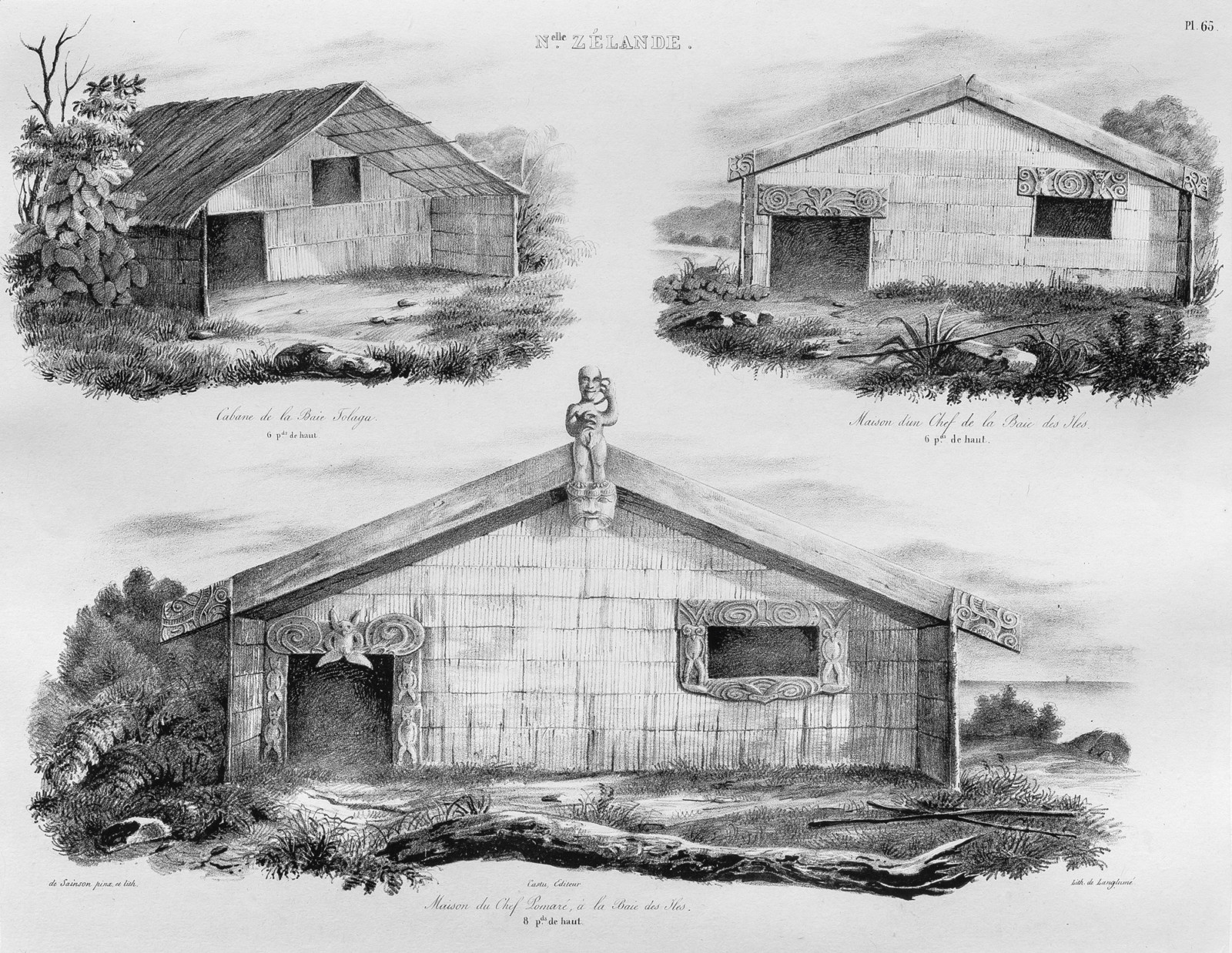DE SAINSON, Louis Auguste;
New Zealand: Hut in Tolaga Bay, House of a Chief of the Bay of Islands, House of Chief Pomare, at the Bay of Islands
1833
Lithograph on paper
326 x 494mm

Original title: ‘N’elle Zélande: Cabane de la Baie Tolaga, Maison d’un Chef de la Baie des Îles, Maison du Chef Pomaré, à la Baie des Îles’. Plate No. 65 from Jules-Sébastien-César Dumont d’Urville, Voyage de la corvette l’Astrolabe exécuté pendant les années 1826–1827–1828–1829 (Paris: J. Tastu, 1833). Other lithographs from the series can be viewed here.
The following text comes from the catalogue for the exhibition Tirohanga Whānui.
De Sainson has been at pains to provide an accurate picture of the appearance of these three whare. The first is an uncarved, wooden-framed structure covered with raupō. As usual, it has only a door and a single window within the deep porch. The second, more elaborate whare has carved bargeboards (maihi) and features window hoods, while Pōmare’s house is a whare whakairo (carved house) befitting his chiefly rank. Not only are its window and door frames carved but there is also a tekoteko (carved human figure) at the apex of the bargeboards.
Many descriptions of buildings occur in the writings of French visitors to the Bay of Islands. Some, reflecting dismay at the difference between European and Māori domestic life, concentrate on dirt, smell and lack of ventilation. Lieutenant de Blois de la Calande, a young French aristocrat as his name indicates, described whare as ‘hovels unbearable for the European’. Others, like de Sainson, both artist and lithographer in this case, offer a more objective picture.
Angela Ballara has written that of all the Bay of Islands chiefs the Ngāpuhi chief Pōmare was the most useful to the early missionaries. After Hongi he was also the most feared. A trader, he armed his people with muskets purchased with surplus crops successfully grown after he had encouraged the use of iron farming tools.
Pōmare was the chief at Matauwhi, situated in a cove a little to the south of Kororāreka. Perhaps this is a drawing of his house there. In 1826, he was killed far from home, at Te Rore on the Waipā River, after his party was surrounded by Waikato and Ngāti Maru warriors seeking utu for earlier Ngāpuhi attacks.
Exhibition History
Tirohanga Whānui: Views from the Past, Te Kōngahu Museum of Waitangi, 15 April to 15 September 2017

